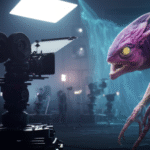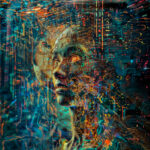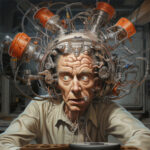Join our community and get the essential weekly AI briefing delivered straight to your inbox.
Hybrid Hollywood: Has AI Just Become the Newest Star on Set?
The world of filmmaking has always been at the forefront of technological innovation. From the earliest moving pictures to the advent of CGI, each breakthrough has redefined what’s possible on the silver screen. Now, a new revolution is underway, and its name is artificial intelligence. Paramount Pictures has just dropped a bombshell, revealing that its upcoming science fiction epic, Celestial, leaned heavily on generative AI for its visual effects, blurring the lines between human artistry and algorithmic creation.
According to director Anna Jenovich, the AI wasn’t just relegated to creating distant planets or filling in crowd scenes. Instead, a proprietary generative video model was instrumental in bringing to life entire sequences, including breathtaking alien creatures and complex physics simulations that would have traditionally required a small army of VFX artists and a hefty budget. Jenovich herself has coined the term “hybrid filmmaking” to describe this groundbreaking approach, signaling a potentially seismic shift in how movies are made.
This revelation throws a spotlight on the rapidly evolving capabilities of generative video models like Sora and Runway Gen-3, which have teased the potential for AI to create realistic and imaginative moving images. Celestial appears to be the first major blockbuster to truly embrace this technology at scale, moving beyond experimental applications and into the heart of high-stakes filmmaking.
The implications of this are far-reaching and are already igniting passionate debate within the creative community. On one hand, the possibilities seem limitless. Imagine filmmakers unburdened by the constraints of budget and time, able to bring even the wildest visions to life with the assistance of intelligent algorithms. The potential for innovation in visual storytelling is immense.
However, the news also raises critical questions about the future of VFX artists and the very definition of creativity in the age of AI. Will these powerful tools lead to job displacement within the industry? How will studios navigate issues of creative control when algorithms are generating significant portions of a film’s visual landscape? And perhaps most fundamentally, what constitutes “art” when a significant part of its creation is driven by artificial intelligence?
The use of AI in Celestial is likely to fuel this debate further. While some may see it as a natural progression of technology, empowering artists with new tools, others will undoubtedly express concerns about the potential devaluation of human skill and the ethical implications of AI playing such a significant role in a creative field.
“Hybrid filmmaking” might just be the tip of the iceberg. As generative AI continues to advance, we could see its influence expand beyond visual effects into areas like script generation, pre-visualization, and even directing. The traditional roles within Hollywood may be on the verge of a dramatic redefinition.
One thing is clear: the arrival of AI as a significant creative force in Hollywood is no longer a hypothetical scenario. It’s happening now, and Celestial could very well be the bellwether of a new era in cinematic history. Whether this co-starring role for AI leads to a golden age of visual storytelling or sparks a deeper reckoning within the creative industries remains to be seen. But one thing is for sure: the credits are about to get a whole lot more interesting.





